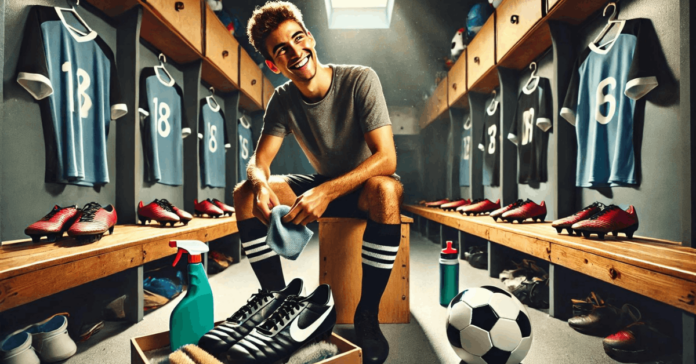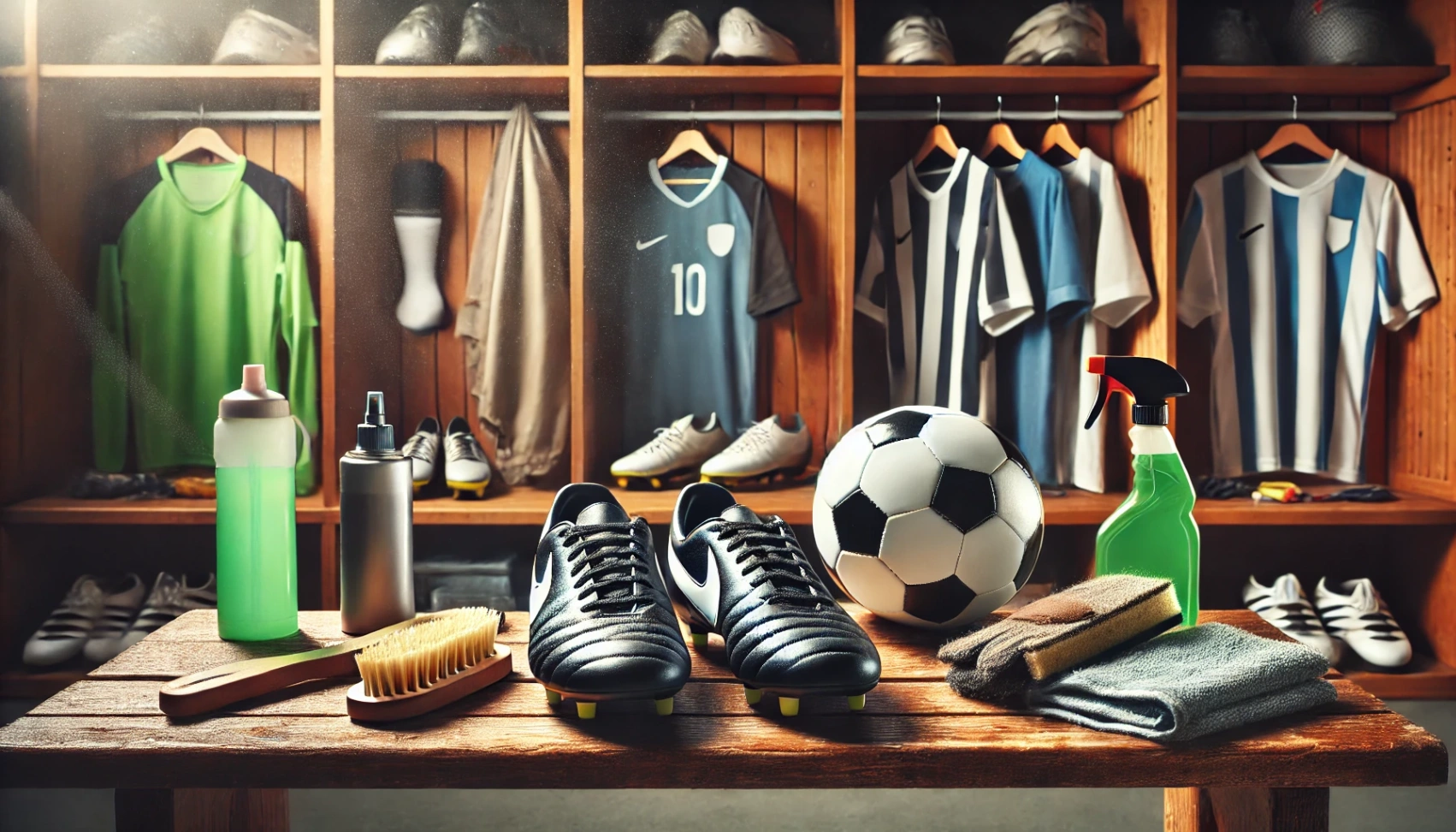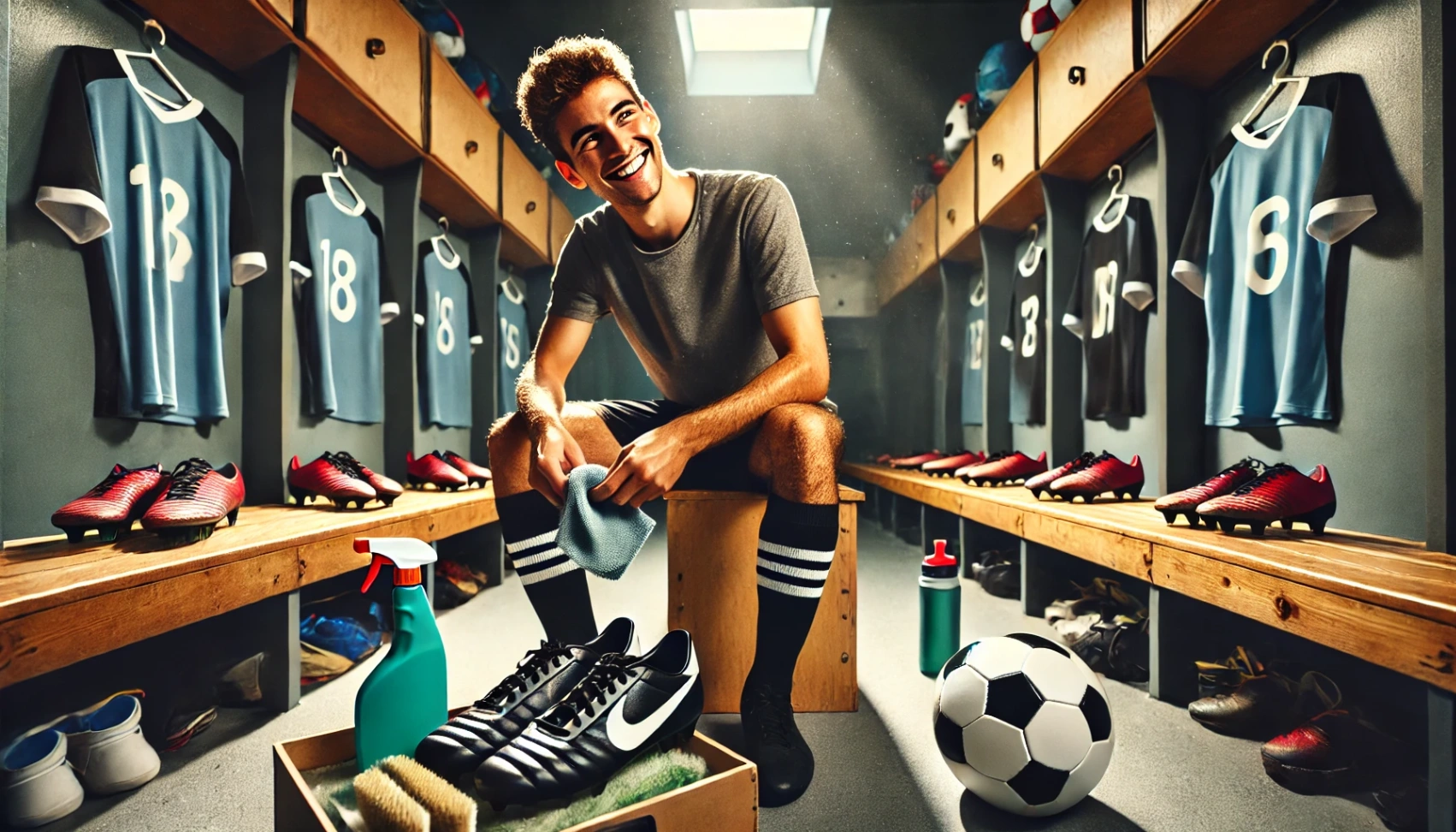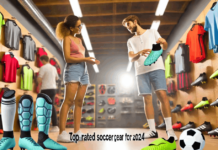
Soccer gear maintenance tips are essential for prolonging the life of your equipment and enhancing your performance on the field.
Caring for your gear, whether experienced or new, prevents costly replacements and keeps you ready to perform your best.
This article will provide you with valuable insights on how to maintain your soccer gear effectively.
Cleaning Your Gear
Regularly cleaning your soccer gear is essential for maintaining its performance and longevity.
Proper care helps remove dirt and bacteria, ensuring your equipment remains in top shape.
Cleaning Soccer Shoes
- Use appropriate cleaners designed for your shoe material.
- Remove dirt and mud after each use with a damp cloth or brush.
- Allow shoes to air dry; avoid direct heat sources.
Washing Uniforms and Training Wear
- Follow care labels for washing instructions.
- Use cold water to prevent shrinking and fading.
- Avoid fabric softeners, which can reduce moisture-wicking properties.
Caring for Accessories (Headbands, Socks)
- Hand wash delicate items or use a mesh laundry bag for machine washing.
- Air dry to maintain elasticity and prevent damage.
Cleaning Shin Guards
- Wipe down with a damp cloth to remove sweat and dirt after each use.
- Allow them to dry thoroughly to prevent odors and bacteria growth.
Maintaining Soccer Balls
- Clean the exterior with a mild soap and water solution.
- Store balls in a cool, dry place to preserve shape and pressure.

Storage Tips
Proper storage of your soccer gear is crucial for maintaining its condition and extending its lifespan.
By following these storage tips, you can ensure that your equipment stays in optimal shape and is ready for use when needed.
Storing Soccer Shoes
- Keep shoes in a dry, cool place away from direct sunlight.
- Use a shoe bag or box to protect them from dust and damage.
- Avoid storing wet shoes; let them dry completely before putting them away.
Storing Uniforms and Accessories
- Hang uniforms on padded hangers to prevent creasing and damage.
- Use breathable storage containers to avoid moisture buildup.
- Store accessories like shin guards and headbands in separate compartments to keep them organized.
Seasonal Storage Considerations
- Rotate gear based on the season to prevent wear on seldom-used items.
- Clean and store off-season gear properly to keep it in good condition for future use.
Using Gear Bags
- Invest in a quality gear bag with multiple compartments to keep items organized.
- Label compartments for easy access to specific gear when needed.
Avoiding Overcrowding
- Don’t cram gear into tight spaces, as this can cause damage.
- Give each item enough room to breathe and maintain its shape.
Regular Inspections
Regularly inspecting your soccer gear is essential for identifying wear and tear before it becomes severe.
By routinely checking your equipment, you can ensure it remains safe and effective for play.
Inspecting Soccer Shoes
- Check for signs of damage, such as worn-out soles or cracks.
- Ensure laces are intact and not frayed.
- Look for any loose parts or components that may need repair.
Examining Uniforms
- Check for loose seams or frayed edges that could worsen over time.
- Look for stains or damage that may need cleaning or patching.
- Ensure that numbers and logos are securely attached.
Assessing Shin Guards
- Inspect for cracks or breaks in the plastic casing.
- Ensure straps are functional and secure for a proper fit.
- Look for signs of wear that may affect performance.
Evaluating Soccer Balls
- Check for proper inflation; use a pressure gauge if necessary.
- Look for signs of leaks or punctures in the ball.
- Ensure the surface is clean and free of debris.
Keeping a Maintenance Log
- Document the condition of your gear during each inspection.
- Note any repairs or replacements needed to track gear lifecycle.
- Set reminders for regular inspections based on usage frequency.
Special Care for Specific Items
Different soccer gear requires unique care to maintain its performance and longevity.
Understanding each item’s specific needs can help extend its lifespan and ensure its performance on the field.
Caring for Shin Guards
- Clean after each use with a damp cloth to remove sweat and dirt.
- Inspect for cracks or signs of wear that could affect protection.
- Store in a cool, dry place to prevent odor and bacteria growth.
Maintaining Soccer Balls
- Clean the exterior with a mild soap and water solution after use.
- Inflate to the recommended pressure and check regularly.
- Store balls away from extreme temperatures and direct sunlight.
Caring for Goalkeeper Gloves
- Rinse gloves with cold water after each use to remove dirt and grime.
- Avoid using harsh detergents; use a mild soap if necessary.
- Allow gloves to air dry away from direct heat; never wring them out.
Maintaining Compression Gear
- Wash compression clothing in cold water to preserve elasticity.
- Avoid fabric softeners, which can degrade the material.
- Hang or lay flat to dry instead of using a dryer to maintain shape.
Taking Care of Training Equipment
- Regularly check cones, balls, and other training aids for damage.
- Store items in a dry location to prevent deterioration.
- Clean equipment after use to maintain performance and appearance.

Using Gear Properly
Using your soccer gear correctly is essential for maximizing its lifespan and ensuring optimal performance on the field.
Proper usage helps maintain your equipment and enhances your playing experience.
Wearing Soccer Shoes Appropriately
- Use the right shoes for the playing surface (firm ground, turf, etc.).
- Ensure a proper fit to avoid discomfort and potential injury.
- Avoid using soccer shoes for non-soccer activities to prevent unnecessary wear.
Utilizing Uniforms Correctly
- Follow care instructions to preserve fabric quality and color.
- Avoid using harsh chemicals or bleach during cleaning.
- Change out of sweaty uniforms promptly to prevent skin irritation and odor.
Employing Shin Guards Effectively
- Ensure shin guards fit snugly and are worn under socks for maximum protection.
- Adjust straps to keep them securely in place during play.
- Replace shin guards when they show signs of significant wear or damage.
Using Soccer Balls Properly
- Inflate to the recommended pressure before each use for optimal performance.
- Use designated practice balls for training sessions to extend the life of game balls.
- Avoid kicking the ball against hard surfaces to prevent damage.
Handling Goalkeeper Gloves Correctly
- Use gloves only for their intended purpose of maintaining grip and durability.
- Rinse off dirt and mud immediately after play to prevent material breakdown.
- Store gloves in a cool, dry place to maintain shape and elasticity.
Taking Care of Training Equipment
- Use cones and other training aids as intended to avoid wear.
- Store training gear adequately to protect it from weather and damage.
- Regularly check for damage and replace as needed to ensure safety during training.
Repairing Minor Damage
Addressing minor damage to your soccer gear quickly can prevent further issues and extend its life.
Here are practical repair techniques for common problems.
Repairing Uniforms
- Sew Loose Seams: Reinforce loose seams with a needle and thread.
- Apply Fabric Patches: Use patches to cover larger holes for durability.
- Iron-on Patches: Quickly fix small rips with iron-on patches.
Fixing Soccer Shoes
- Use Shoe Glue: Reattach peeling soles with strong adhesive.
- Replace Worn Laces: Change frayed laces for a secure fit.
- Waterproof Shoes: Protect against moisture with waterproofing spray.
Mending Shin Guards
- Seal Cracks: Use duct tape or adhesive for small cracks.
- Fix Straps: Sew or glue broken straps for security.
- Clean Regularly: Remove sweat and dirt, and apply protective spray.
Repairing Soccer Balls
- Patch Holes: Seal small punctures with a repair kit.
- Check Inflation: Regularly inflate to the recommended pressure.
- Clean After Use: Remove dirt to prevent deterioration.
Restoring Goalkeeper Gloves
- Repair Torn Latex: Use glove adhesive for minor tears.
- Clean After Use: Maintain grip by cleaning gloves regularly.
- Air Dry: Always air dry to prevent mold and maintain shape.
Investing in Quality Gear
Investing in high-quality soccer gear is essential for performance and longevity.
Though it may have a higher upfront cost, the durability and effectiveness benefits make it worthwhile for serious players.
Enhanced Performance
- Quality gear features advanced materials that improve comfort and support.
- Well-constructed shoes provide better traction and stability.
- High-performance uniforms enhance breathability and moisture-wicking.
Durability and Longevity
- Superior materials withstand wear and tear over time.
- Durable gear reduces replacement frequency, saving money in the long term.
- More robust construction lowers the risk of gear failure during games.
Improved Safety
- High-quality shin guards offer better impact resistance.
- Reliable equipment reduces injury risk, allowing you to focus on performance.
- Quality gloves enhance a goalkeeper’s effectiveness and safety.
Better Fit and Comfort
- Quality gear often has customizable fit options for better comfort.
- Superior materials provide support, reducing blisters and discomfort.
- Comfortable gear allows for greater mobility and performance.
Increased Confidence
- Using high-quality gear boosts your confidence on the field.
- Reliable equipment lets you focus on skills rather than gear failures.
- Investing in gear reflects your commitment to the sport, enhancing motivation.
Wrapping It Up
Taking proper care of your soccer gear through regular maintenance, cleaning, and timely repairs is essential for maximizing its lifespan and performance.
Following these tips ensures your equipment stays in top condition for every game and practice.
Don’t wait—start implementing these soccer gear maintenance tips today to enhance your performance on the field!






